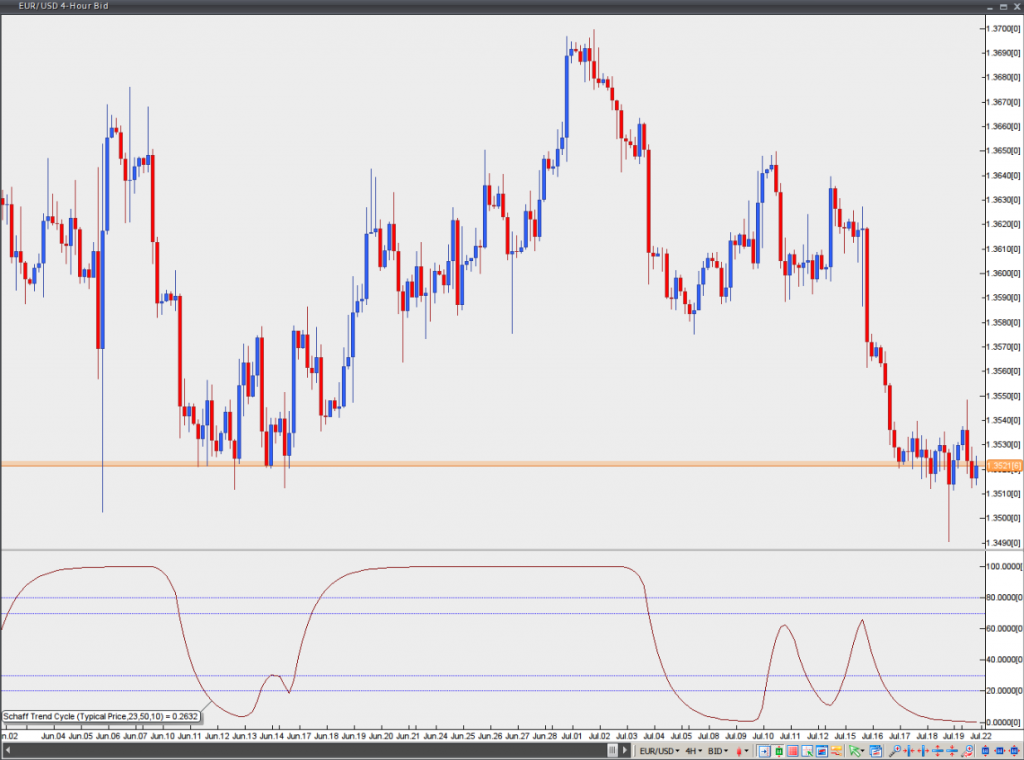Schaff Trend Cycle
This lesson will cover the following
- Explanation and calculation
- How to interpret this indicator
- Trading signals, generated by the indicator
The Schaff Trend Cycle is a method, developed by Doug Schaff in the 1990s and based on the concept that trends also have repeating high and low patterns, or cycles. This is a modified MACD line, run through a modified stochastic algorithm and smoothed with Wilders smoothing in order to estimate the final Schaff Trend Cycle (STC) indicator. Its purpose is to identify the direction, in which a trend cycle is moving and possible peaks and bottoms within this cycle.
Three input values are used with the STC:
– Sh: shorter-term Exponential Moving Average with a default period of 23
– Lg: longer-term Exponential Moving Average with a default period of 50
– Cycle, set at half the cycle length with a default value of 10.
The STC is calculated in the following order:
First, the 23-period and the 50-period EMA and the MACD values are calculated:
EMA1 = EMA (Close, Short Length);
EMA2 = EMA (Close, Long Length);
MACD = EMA1 – EMA2.
Second, the 10-period Stochastic from the MACD values is calculated:
%K (MACD) = %KV (MACD, 10);
%D (MACD) = %DV (MACD, 10);
Schaff = 100 x (MACD – %K (MACD)) / (%D (MACD) – %K (MACD)).
In case the STC indicator is decreasing, this indicates that the trend cycle is falling, while the price tends to stabilize or follow the cycle to the downside.
In case the STC indicator is increasing, this indicates that the trend cycle is up, while the price tends to stabilize or follow the cycle to the upside.
